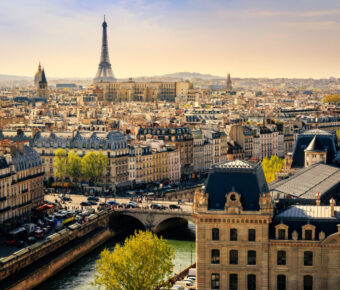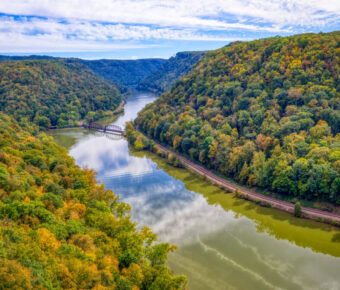
Queer Friendly Destinations in Eastern Europe: 7 Secret Spots for an Unforgettable LGBTQ+ Adventure
When I first wandered through eastern Europe, I honestly didn’t expect to stumble on so many pockets of warmth for queer travelers like me. These days, more cities in eastern Europe welcome LGBTQ+ visitors, and you can find lively queer nightlife, safe hideouts, and a genuine sense of community—even in places that, not so long ago, felt a bit closed off.
The region isn’t a perfect utopia, but if you know where to look (and how to travel smart), you’ll uncover some real gems.
I’ve laughed late into the night in Budapest’s coziest bars. Zagreb’s pride events? Surprisingly colorful and full of life. And I’ve found romantic hideaways tucked away from the usual tourist crowds.
If you’re wondering if eastern Europe is ready for queer travelers, I’d say: get ready for a few surprises and plenty of adventure.
Table of Contents
- Key Takeaways
- Why Eastern Europe: An Emerging Queer Friendly Destination
- Changing Attitudes and Social Acceptance
- Legal Protections and Rights for LGBTQ+ Travelers
- Visibility and Local LGBTQ+ Communities
- Top Queer-Friendly Cities in Eastern Europe
- Prague: Bohemia’s Pink Heart
- Budapest: Ruin Bars and Vibrant Pride
- Bucharest: Bucharest Pride and Urban Nightlife
- Cluj-Napoca: Creative Hubs and Welcoming Community
- Queer Nightlife and LGBTQ+ Culture in Eastern European Hotspots
- Unmissable Gay Bars and Clubs
- Rainbow Festivals & Annual Pride Celebrations
- LGBTQ+ Districts and Gathering Spaces
- Safety and Legal Considerations for LGBTQ+ Travelers
- Understanding Local Laws and Protections
- Navigating Public Displays of Affection
- Healthcare Access and Support
- Romantic Getaways and Unique Experiences
- Picturesque Destinations for Couples
- Unique Cultural Experiences for Queer Travelers
- Hidden Gems: Lesser-Known Queer Friendly Spots
- Up-and-Coming LGBTQ+ Scenes
- Local LGBTQ+-Led Tours and Initiatives
- Planning Your Trip: Tips and Practical Advice
- When to Visit: Pride Month and Beyond
- Cost of Living and Budgeting
- Finding LGBTQ+ Friendly Accommodation
- Frequently Asked Questions
- What Eastern European cities are known for their welcoming attitude towards the LGBTQ+ community?
- Which festivals or events in Eastern Europe cater specifically to queer travelers?
- Can you recommend any queer-friendly accommodations in Eastern Europe?
- What safety considerations should LGBTQ+ travelers keep in mind when visiting Eastern Europe?
- Are there any Eastern European destinations with significant historical relevance to queer culture?
- What resources are available for LGBTQ+ individuals seeking community and support while traveling in Eastern Europe?
- Book Your Dream Experience
- More Travel Guides
Key Takeaways
- Eastern Europe boasts emerging queer-friendly destinations.
- Some cities offer vibrant nightlife and a welcoming culture.
- Smart safety tips and local know-how can make your trip shine.
Why Eastern Europe: An Emerging Queer Friendly Destination
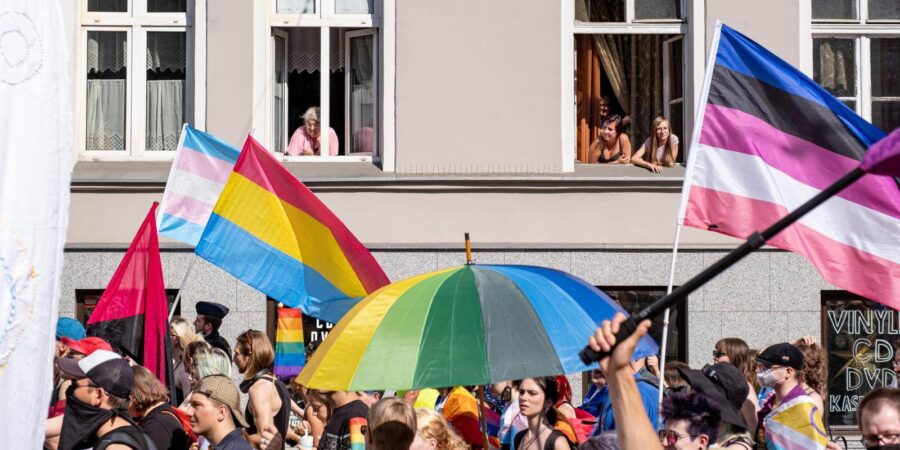
Eastern Europe has been changing at breakneck speed. Where LGBTQ+ folks once had to keep things hush-hush, you’ll now find more open communities, events, and even Pride parades.
If you get a handle on how things are shifting—socially, legally, and within local queer circles—you’ll travel with a lot more confidence.
Changing Attitudes and Social Acceptance
In places like Warsaw, Budapest, or Prague, you’ll probably be surprised by the shift. Younger generations and global influences are making cities more open-minded. I chatted with a local in Kraków who told me, “Ten years ago, things were different, but today, nobody really minds.” That stuck with me.
But not every spot rolls out the rainbow carpet. Rural areas still lean traditional, and you might get a few looks if you’re openly affectionate. In bigger cities or well-known queer bars, you’ll usually feel welcomed. Pride marches are popping up in more cities, too. Joining one in an unexpected place can be a rush.
Social media is a big deal here—it helps people connect, share, and organize. Has everything changed? Not quite. But it’s miles ahead of where it used to be.
Legal Protections and Rights for LGBTQ+ Travelers
Legal protections in Eastern Europe are a mixed bag. Countries like the Czech Republic and Estonia have moved forward with anti-discrimination laws and legal recognition. Others are still catching up, and you won’t always find marriage equality or gender recognition.
Poland and Hungary, for example, haven’t legalized same-sex marriage. Still, cities like Warsaw or Budapest often provide more support and protection than the national laws suggest. Before you go, check the latest legal updates—I’ve seen things change in a single year.
Touristy and urban areas usually feel safe, but it’s smart to stay in the loop. Local LGBTQ+ organizations share the latest advice. Here’s a quick checklist before you set off:
- Are there anti-discrimination laws?
- What’s the deal with same-sex marriage or partnerships?
- How safe are public displays of affection?
Visibility and Local LGBTQ+ Communities
Queer communities in Eastern Europe pack a lot of creativity and resilience. Even where openness isn’t easy, locals find ways to connect—hidden bars, dance nights, or small but fierce festivals. I’ll never forget a pop-up queer art show in Brno or a “tea party” in Vilnius that turned into a mini dance-off.
Big cities throw bold Pride parades, LGBTQ+ film festivals, and even have official queer centers. If you’re not sure where to start, look for rainbow stickers on café doors—they’re usually a good sign you’ll find friends inside. Sometimes, expats and travelers keep the scene buzzing.
Want to meet locals? Try joining a community event or messaging a local LGBTQ+ group before you land. You get a peek behind the curtain and, if you’re lucky, walk away with stories and friends you never expected.
Top Queer-Friendly Cities in Eastern Europe
Eastern Europe hides some real treasures for LGBTQ+ travelers. You’ll find lively pride festivals, creative nightlife, and communities that are a lot more welcoming than the headlines suggest.
Prague: Bohemia’s Pink Heart
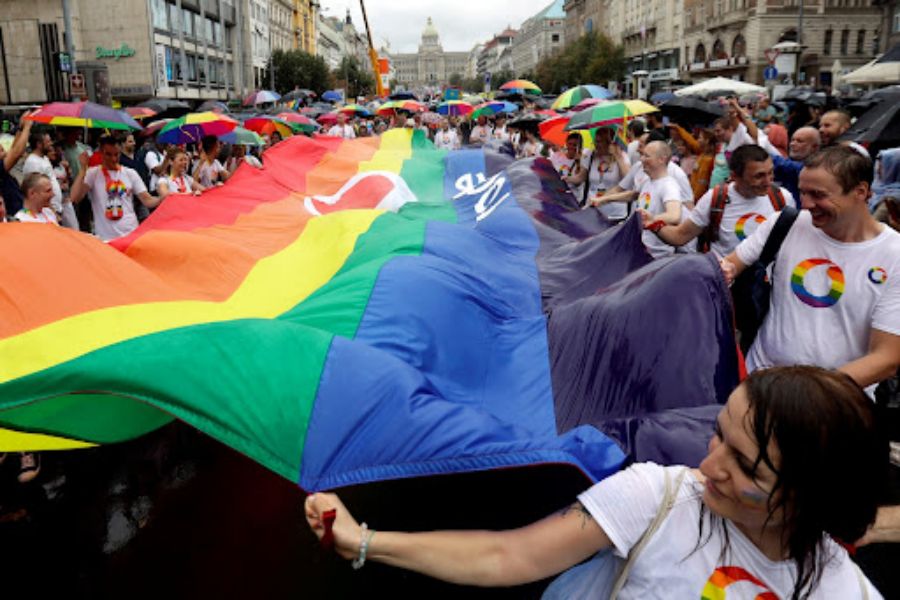
Prague surprised me with its openness. The city weaves old-world charm with a lively gay scene. Wander Vinohrady and you’ll spot rainbow flags and tucked-away bars between Art Nouveau facades.
Every August, Prague Pride takes over, and the street energy is just wild. Crossing the Charles Bridge to a drag brunch? That’s a memory you’ll keep. Clubs like Friends draw a fun crowd, and Patra is a cozy café with year-round events.
Gay-friendly hotels seem to be everywhere, and the staff always know the best local spots. Prague lets you feel noticed, not judged—finally, a city where you can just be.
Budapest: Ruin Bars and Vibrant Pride
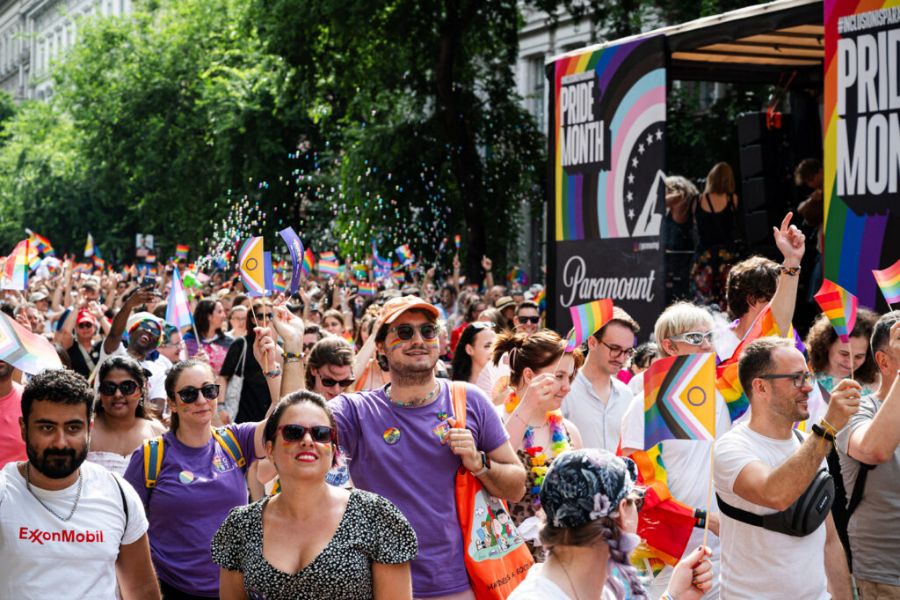
Hungary’s politics can be tricky, but Budapest’s queer scene refuses to disappear. The city’s “ruin bars” are legendary—Szimpla Kert is the kind of place where you sip a drink in a crumbling factory, and you might meet a local activist at the next table.
Budapest Pride in July transforms the city, filling it with color, music, and pure joy. Most action happens downtown, especially in the Jewish Quarter, packed with LGBTQ+ cafés, bars, and drag shows.
Queer arts festivals and pop-up events happen year-round. Locals might seem reserved at first, but step into Why Not Café or Magic Bath and suddenly you’re part of the crew. There’s this stubborn hope in Budapest’s LGBTQ+ scene—it’s not going anywhere.
Bucharest: Bucharest Pride and Urban Nightlife

Romania doesn’t usually top the list for gay-friendly travel, but Bucharest is a wild card. Pride month is electric. Bucharest Pride draws a new wave of activists, allies, and street performers.
No official gay district here, but you’ll find LGBTQ+ spots around the Old Town. Control Club is a favorite—part dance party, part queer hangout. Interbelic is another late-night cocktail spot where nobody blinks at two men holding hands.
The community’s growing fast. For a taste of the drag scene, check out the smaller bars. There’s a scrappy, creative energy, and people love to talk—about politics, pop music, you name it.
Cluj-Napoca: Creative Hubs and Welcoming Community
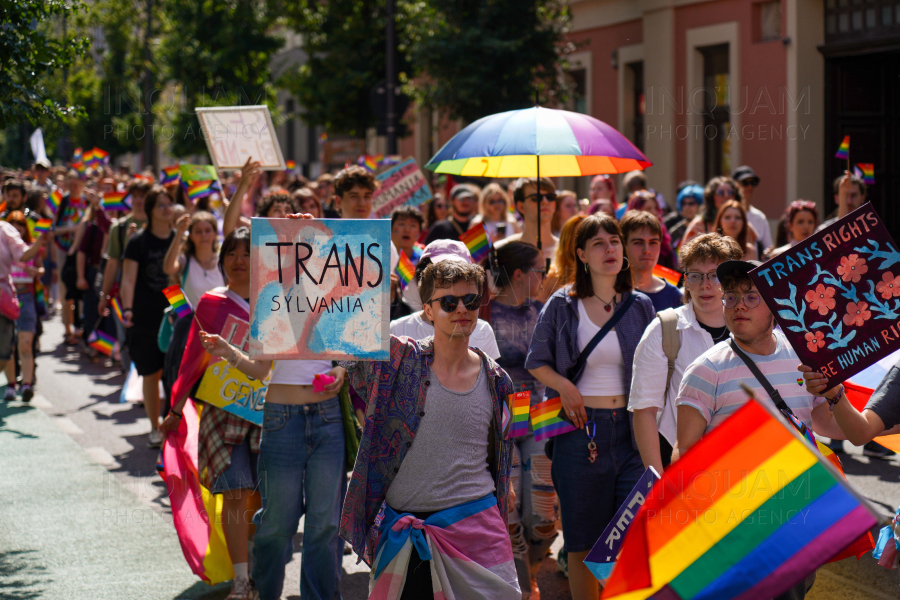
Unless you’re into off-the-beaten-path travel, Cluj-Napoca might be new to you. It’s Romania’s unofficial creative capital, tucked in Transylvania. No huge gayborhood, but the university vibe makes things surprisingly open.
PRIDE Romania hosts events, film screenings, and workshops that draw people from all over. The student energy is real—bars like Enigma and Cafe Bulgakov feel safe and inclusive, with rainbow stickers on doors and flyers for LGBTQ+ parties.
I once found myself at a queer poetry night here, chatting with artists until sunrise. If you like mixing travel with activism and creativity, Cluj-Napoca is packed with “how am I here?” moments. The community isn’t huge, but it’s warm and genuinely welcoming.
Queer Nightlife and LGBTQ+ Culture in Eastern European Hotspots
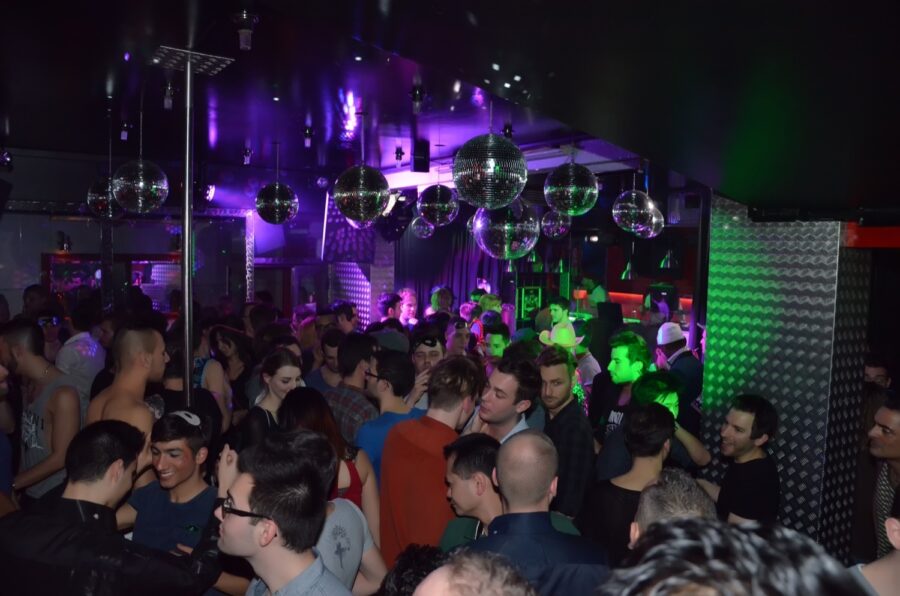
Some of the most vibrant gay bars and bold pride celebrations hide in Eastern Europe’s cities. You’ll discover secret queer hideouts, wild club nights, and a growing LGBTQ+ scene where you least expect it.
Unmissable Gay Bars and Clubs
If you’re ready to dive in, Warsaw is a great place to start. Toro gets absolutely packed on weekends, with that sweaty, high-energy dancefloor vibe. You order a shot, blink, and suddenly it’s almost morning.
Budapest’s scene goes off at clubs like Alterego. Expect drag shows, pop anthems, and a crowd that doesn’t care who’s dancing with whom. Sometimes you’ll stumble into tiny, underground parties—hidden venues you only hear about from someone in the know.
Don’t skip the smaller cities. In Vilnius, spotting a rainbow flag in a bar window feels like discovering treasure. Maybe you’ll end up at karaoke, maybe you’ll leave with a new drag queen friend named Svetlana.
Here’s a quick list if you’re the table type:
| City | Gay Bar/Club | Vibe/Highlight |
|---|---|---|
| Warsaw | Toro | High-energy, late crowd |
| Budapest | Alterego | Drag shows, pop hits |
| Prague | Club Termix | Young vibe, themed nights |
| Vilnius | Soho Club | Welcoming, diverse crowd |
Rainbow Festivals & Annual Pride Celebrations

Pride gets surprisingly bold here, even in places you wouldn’t expect. Warsaw’s Parada Równości is Poland’s biggest, and the hope in the air is real—especially when you know what local activists have pushed through.
Budapest Pride runs for a whole week. Parade day is wild: dancers on floats, Europop blasting, rainbow face paint everywhere. One year, I bounced from after-party to after-party—each club more outrageous than the last. Hugs in the street, strangers becoming friends. It really does feel like family.
Each city puts its own spin on things. Prague’s Pride isn’t just a parade—there are film screenings, boat parties, queer art shows. Festival guides are gold if you want to catch the best parts. And your camera roll? Prepare for a riot of color.
LGBTQ+ Districts and Gathering Spaces
Eastern Europe doesn’t have the sprawling gayborhoods of London or San Francisco, but you’ll find little clusters where the community gathers. In Warsaw, gay-friendly bars dot the city center—hidden enough to feel secret, but not impossible to find.
Locals in Budapest sometimes call the area between Erzsébet körút and nearby streets the “rainbow triangle.” You’ll spot LGBTQ+ bookshops, sex-positive cafés, bars, and even a spa or two that’s famously inclusive. I always say: follow the colorful flyers on the streetlights—there’s a party somewhere.
Prague and Vilnius offer gathering spaces beyond nightlife—cafés and galleries double as community hubs. For travelers who feel a bit shy, daytime events are a gentle way in. I once wandered into a zine launch in Vilnius and left with a crew of new friends. Sometimes, all it takes is a strong coffee and a good chat to feel like you belong.
Safety and Legal Considerations for LGBTQ+ Travelers
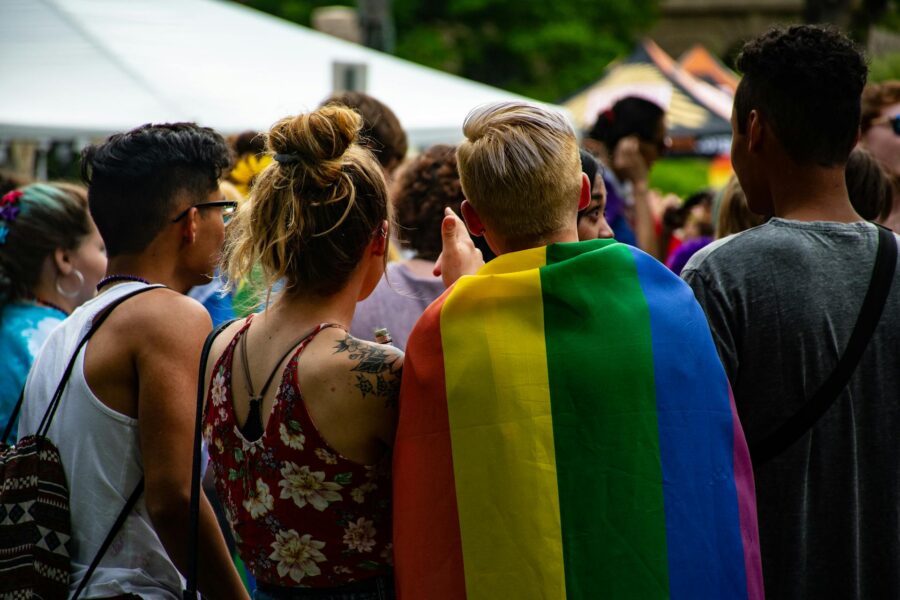
Eastern Europe’s attitudes and laws are all over the map for LGBTQ+ travelers. Some places are opening up, but you’ll still find pockets where old-school views and rules linger. If you get a sense of the lay of the land, you’ll travel smoother and steer clear of sketchy situations.
Understanding Local Laws and Protections
Don’t ever assume LGBTQ+ rights are the same across borders—every country’s got its own quirks. In Hungary, the “gay propaganda” law restricts public discussion of LGBTQ+ issues, especially around minors. Meanwhile, Poland’s “LGBT-free zones” have drawn plenty of international criticism.
Estonia and Slovenia? They’re moving in the right direction, with legal same-sex partnerships and growing protections.
Some countries get serious about prosecuting hate crimes against LGBTQ+ folks, but others leave things pretty murky. Conversion therapy still isn’t banned everywhere, and you might run into legal discrimination in housing or the workplace.
Before you go, double-check the legal status of same-sex relationships and any special laws targeting LGBTQ+ communities. I always save emergency contacts, legal aid info, and my embassy’s number on my phone and in print—just in case things go sideways. Grabbing travel insurance that covers LGBTQ+ issues is a no-brainer. You’ll probably never need it, but it sure beats scrambling if you do.
Let’s be real: in much of Eastern Europe, holding hands or kissing your partner in public can attract unwanted attention. In places like Prague or certain neighborhoods in Ljubljana, you’ll blend right in. But if you wander into small towns in Romania, Bulgaria, or Serbia, even a small gesture can make you stand out.
My partner and I have noticed that what felt normal in Berlin or Amsterdam suddenly felt risky once we crossed east. Honestly, the best advice is to read the crowd—see what local couples do before you get cozy. If you feel uneasy, it’s okay to hold back until you’re sure it’s safe.
Don’t let nerves steal your joy, though. In cities with pride festivals or visible LGBTQ+ scenes—Budapest and Zagreb come to mind—you’ll find bars, events, and neighborhoods where you can just be yourselves.
Healthcare Access and Support
Inclusive healthcare isn’t a given everywhere, so you’ll want to plan ahead. Major cities like Warsaw and Bratislava sometimes have English-speaking, LGBTQ+-friendly doctors, but you’ll have a harder time in rural or conservative areas.
If you’re traveling with medications—PrEP, HRT, hormones—bring extra, and keep everything in clearly labeled bottles with a doctor’s note. Some meds are considered controlled substances, and customs agents might ask questions.
Don’t expect to find LGBTQ+ clinics or support groups on every corner. Keep a list of clinics and emergency contacts that have experience with queer travelers. Carrying a translated explanation of your medical needs in the local language has saved me more than once when seeing a doctor abroad. Always know where to go for urgent care, and keep your insurance details handy.
Romantic Getaways and Unique Experiences
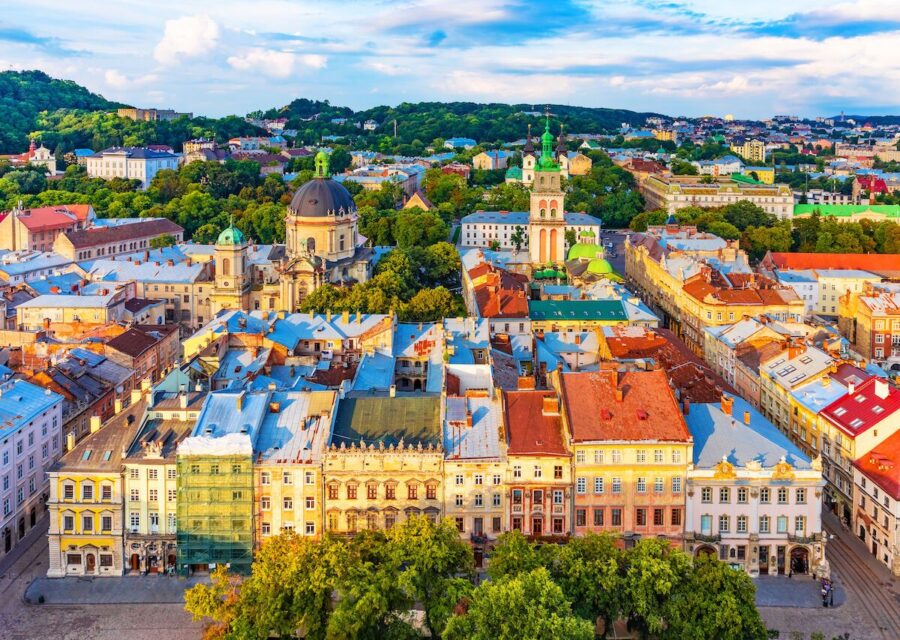
Eastern Europe has some criminally underrated spots for LGBTQ couples looking for romance, safety, and memorable adventures. Whether you’re after jaw-dropping scenery or quirky culture, you’ll find plenty of welcoming options.
Picturesque Destinations for Couples
If you’re dreaming of a romantic trip, Prague and Budapest should top your list. Winding streets, riverside strolls, and those old towns—honestly, they feel custom-made for couples.
Walking Prague’s Charles Bridge at sunrise? Unreal. Budapest’s thermal baths are perfect for unwinding together, and the city’s ruin bars are both lively and inclusive. Some of my favorite memories are sipping Tokaji wine with my partner as jazz drifts through a candlelit bar.
Poland’s Kraków might surprise you—it’s actually pretty welcoming for same-sex couples. The market square is ideal for a chill afternoon, and you’ll stumble on cozy, queer-friendly spots if you know where to look. If you’re watching your wallet, cheap flights to these cities pop up more often than you’d think.
Unique Cultural Experiences for Queer Travelers
Eastern European culture is layered and full of surprises, especially if you wander off the main drag. You might find drag shows in tucked-away basements, indie bookshops with LGBTQ authors, or open-air festivals that feel like a secret party.
Bucharest, for example, has vibrant Pride events and a growing queer creative scene. Underground galleries, indie films, and art collectives sometimes meet in someone’s living room—don’t be shy about joining in.
Tours now cater to LGBTQ travelers, like street art walks in Vilnius or queer history strolls in Sofia. I love these because you get to connect with local stories and feel part of the scene, even far from home. Local guides are your best friends—they know the hidden gems and safest places for LGBTQ couples. If you’re after something different, check out creative activities led by locals in most big cities.
Hidden Gems: Lesser-Known Queer Friendly Spots
Eastern Europe’s list of queer-friendly places keeps growing, and you can find genuine surprises if you dig a little deeper. Smaller towns and unique experiences can really make your trip if you know where to look.
Up-and-Coming LGBTQ+ Scenes
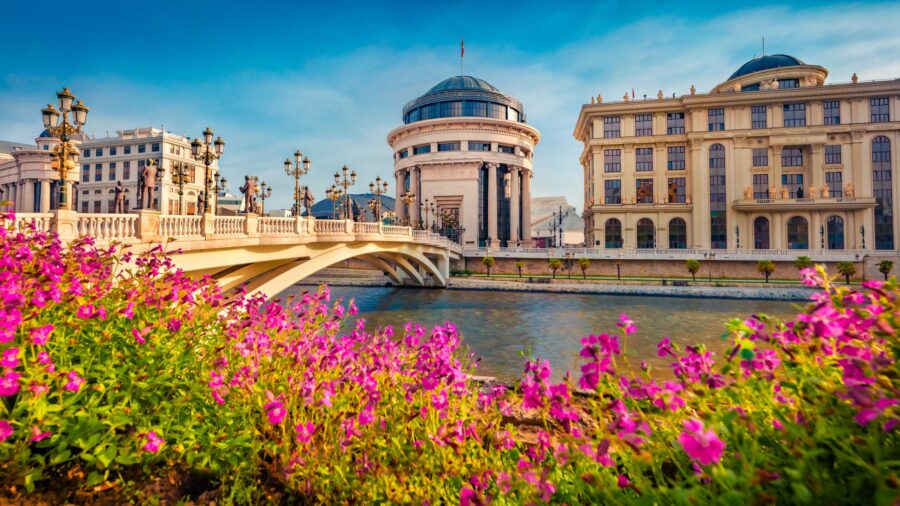
Sure, big cities like Prague, Budapest, and Tallinn have established scenes. But the real charm sometimes hides in less obvious places. Think Ohrid in North Macedonia or Plovdiv in Bulgaria—no giant pride parades, but you’ll spot rainbow stickers in shop windows, queer-run cafés, or poetry nights that welcome everyone.
If you’ve ever felt nervous about leaving the main cities, these towns offer warmth and curiosity in spades. Locals may seem shy at first, but ask about the best hidden bar and you’ll break the ice. Visibility isn’t always loud, but it’s there—woven into daily life, not just on display.
I always check online forums or local LGBTQ+ social media groups before visiting somewhere new. They’re goldmines for pop-up events, gallery nights, or outdoor movies. Stay open, and you might just find yourself at a cozy party in a wine cellar you’ll never forget.
Local LGBTQ+-Led Tours and Initiatives
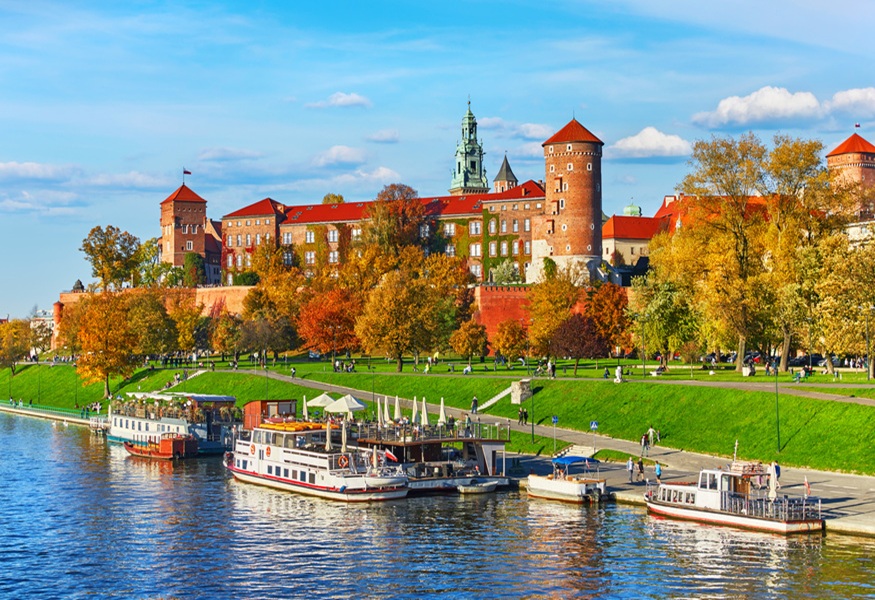
Exploring a city with a local—especially someone from the queer community—turns a trip into something special. In Kraków and Bratislava, LGBTQ+ and women-owned tour companies now run walks that highlight lesser-known queer sites, hidden memorials, secret bars, and even hands-on workshops for the local community.
I’ve met guides in Budapest who share stories from the ’90s and how acceptance slowly took root. These tours usually mix queer culture with food stops, indie galleries, or just a meandering stroll you’d never get with a big group. You can book these experiences directly through people who really know the scene.
A lot of these initiatives focus on amplifying queer voices, not just treating them as a novelty. You’ll help support local artists and get a real sense of what it’s like to live and love in places still carving out their queer space. Honestly, some of my most meaningful travel moments have come from these guides and the stories they share.
Planning Your Trip: Tips and Practical Advice
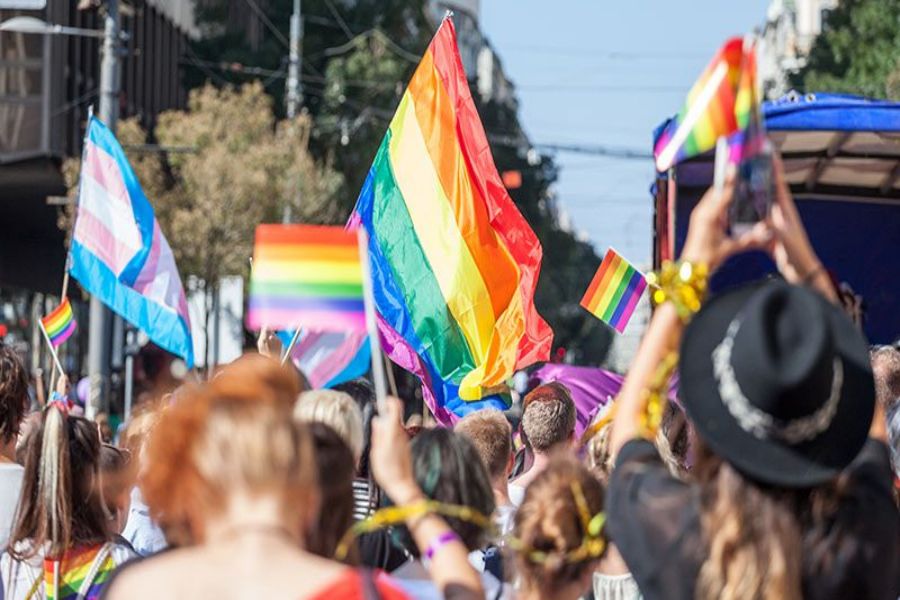
Traveling Eastern Europe as an LGBTQ+ visitor takes a bit of homework, flexibility, and a taste for adventure. The right timing, budgeting, and choice of accommodation can make all the difference.
When to Visit: Pride Month and Beyond
Pride Month is a big draw, but not every city celebrates in June. Prague and Tallinn often hold their parades in July or August, so check local calendars before you book. Some festivals are intimate, others bring in crowds from across the continent.
Traveling off-season saves cash, but nightlife can be quieter. And fair warning—not every city is equally open. Big cities like Budapest and Zagreb usually have more events and a safer vibe than rural spots.
I once stumbled into Baltic Pride in Vilnius by accident—what a wild, warm surprise. Catching Pride in a new place gives you a unique perspective and a burst of local energy.
Cost of Living and Budgeting
Costs in Eastern Europe are all over the place. Sofia and Belgrade are budget-friendly, while Prague or Dubrovnik can be pricey, especially during peak season. Hostels, guesthouses, and street food help your money go further.
When booking flights, compare multiple airlines and travel dates—sites that let you search flights, hotels & car hire in one go are a lifesaver.
Here’s a tip: use luggage storage at train stations for layovers or day trips. No one wants to drag a suitcase into a crowded café, and it’s usually cheap. I once left my bags near Krakow’s center and felt totally free. Bigger cities also offer official luggage storage right by main attractions.
Finding LGBTQ+ Friendly Accommodation
Not every hotel rolls out the rainbow carpet, so a little research goes a long way. Review platforms and filters like “gay-friendly” or “LGBTQ+ friendly” help you spot inclusive properties. International brands are usually safe in big cities, but you’ll also find indie hotels with rainbow flags in the window.
Booking direct online lets you compare neighborhoods, amenities, and reviews from other LGBTQ+ travelers. If you like to plan ahead, browse the best hotels & accommodations before you arrive.
Here’s something I do: if I’m unsure about a place, I send a quick message. Staff in Eastern Europe are often honest and even happy to help—asking directly has led me to some gems I’d never have found otherwise.
Frequently Asked Questions
You might be surprised how many queer-friendly spots pop up in Eastern Europe, especially in student-heavy or touristy cities. There are also hidden pockets of queer history and some annual events that pull in visitors from all over.
What Eastern European cities are known for their welcoming attitude towards the LGBTQ+ community?
Prague is a classic—it’s got easygoing bars, a lively Pride, and most folks just don’t care who you love. Budapest is catching up fast, especially in the Jewish Quarter, which has several gay bars and chill cafés.
Tallinn in Estonia is more progressive than its reputation, with intimate venues and a sense of change in the air. Ljubljana, Slovenia feels warm, safe, and I always recommend it. Even Vilnius, though smaller, has a pretty open-minded young crowd.
Which festivals or events in Eastern Europe cater specifically to queer travelers?
Prague Pride is a must—the city comes alive, and those bridge parties are something else. Budapest Pride draws huge crowds, especially for river cruises and pop-up art shows.
In the Balkans, Ljubljana Pride is smaller but super heartfelt—think grassroots and community-driven. Warsaw’s Equality Parade is the biggest in the region, and it gets more vibrant every year. Bratislava and Zagreb also host smaller events, so keep an eye out if you’re in town.
Can you recommend any queer-friendly accommodations in Eastern Europe?
International chains like Hilton and Marriott are usually a safe bet, but I’d nudge you toward local boutique hotels or city-center guesthouses. In Prague, “Axel Hotel” sits right in the nightlife district and is well-known.
Budapest’s “Brody House” attracts open-minded travelers from all walks of life. Ljubljana’s “Vander Urbani Resort” is a favorite with LGBTQ+ couples, especially those after a bit of romance and a rooftop pool.
What safety considerations should LGBTQ+ travelers keep in mind when visiting Eastern Europe?
Honestly, while attitudes have softened in recent years, you might still catch a few stares—or the odd snide remark—if you show affection in public, especially outside the main cities. I wouldn’t wander down empty side streets late at night; stick to lively nightlife spots where you’ll blend in with the crowd.
Before you pack your bags, take a few minutes to look up the latest local laws and skim through recent news. Sometimes things change quickly, and you don’t want surprises. If a situation feels off, just trust your instincts and move along—no need to be polite about your own safety.
Are there any Eastern European destinations with significant historical relevance to queer culture?
Prague? It’s quietly fascinating. Some of the city’s old coffeehouses once doubled as discreet meeting spots for queer writers and artists—if you ask the right barista, you might even hear a story or two. Budapest has its share of hidden history too; during the communist era, secret clubs operated behind unmarked doors, and if you’re observant, you might spot a plaque or a tiny display tucked away in a corner.
Tallinn’s Old Town feels almost magical. It hosted some of the region’s earliest pride gatherings, back when even gathering was a risk. Sure, it’s not Berlin, but these little pockets of history mean a lot—especially to the folks who kept the community alive long before rainbow flags hit the main squares. If you’re curious, don’t be shy about asking locals; you’ll often get a far more personal tour than any guidebook can provide.
What resources are available for LGBTQ+ individuals seeking community and support while traveling in Eastern Europe?
Honestly, I’d always start by looking for local LGBTQ+ organizations. A surprising number of cities—even the smaller ones—have some sort of queer center, or at least an online community that’s happy to welcome travelers. Sometimes you just want advice or a friendly chat, and these folks usually get it.
Facebook groups are more lively than you’d expect. I’ve found them to be a goldmine for up-to-date info and spontaneous meetups.
Don’t overlook apps like Hornet or HER—they tend to work in most cities, but you might want to try Meetup.com too. There are often queer-friendly gatherings listed that don’t show up anywhere else.
Here’s a little trick: some bars and cafés quietly act as info hubs for the local LGBTQ+ scene. If you’re feeling bold, just ask the bartender or barista what’s going on. Most people love to help point you in the right direction, especially if you’re visiting and want to see the real side of the city.

